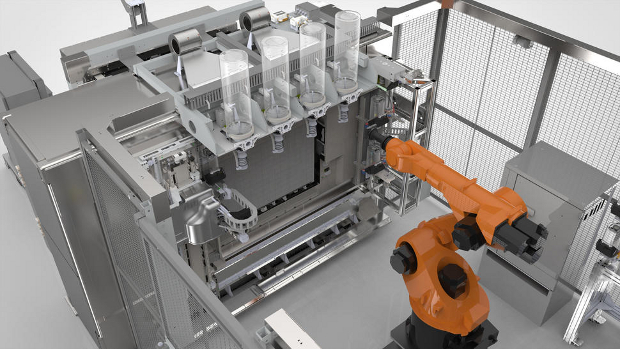Ford will be the first car maker to test a new 3D printer that can build parts of unlimited size. The company is also testing the printer to make prototypes of one-piece auto parts that could be used in production of future vehicles.
The use of a 3D printer capable of manufacturing parts of unlimited size and shape “could be a breakthrough for vehicle manufacturing,” the company said in a news release.
Ford is testing the Stratasys Infinite-Build 3D printer, which was one of two new industrial machines announced last Autumn. The printer can also build objects using materials such as carbon fibre for lighter weight and stronger parts.
For example, Ford said, a 3D-printed spoiler may weigh less than half of its metal-cast equivalent.
“Increasingly affordable and efficient, 3D printing large car parts, like car spoilers, could benefit both Ford and consumers,” Ford said. “Parts that are printed can be lighter in weight than their traditionally manufactured counterparts, and may help improve fuel efficiency.”
3D printing technology, Ford said, can provide a more efficient and affordable way to produce tooling, prototype parts, or components at low volumes, like Ford Performance vehicles, or for personalised car parts.
The new 3D print system is located at Ford’s Research and Innovation Centre in Dearborn, Michigan.
The Stratasys Infinite-Build 3D printer was designed specifically to address the requirements of the aerospace and automotive industries by being able to build completed parts with repeatable mechanical properties.
Boeing is also testing an Infinite-Build 3D printer to explore the production of low volume, lightweight parts.
The printer uses a ‘screw’ or ‘worm’ drive filament extruder, enabling it to print with composite materials, such as carbon fibre, which doesn’t shrink or warp as much as more common thermoplastics. Typically, fused deposition modeling (FDM) 3D printers press a polymer filament through a pair of wheels or gears and out of a heated extruder head, layer by layer. A screw extruder winds the filament through the head, which increases the flow pressure needed tor extruding composite materials.
Stratasys’ Infinite-Build 3D printer uses a horizontal build platform versus a traditional vertical platform to create printed objects. By turning the platform horizontally, the machine can build parts sideways, which translates into a build area that’s only limited by the space a manufacturer has.
“This gives us the capacity for making much larger parts and to gain much lighter assembly,” said Ellen Lee, technical leader at Ford’s additive manufacturing research facility.
IDG News Service








Subscribers 0
Fans 0
Followers 0
Followers